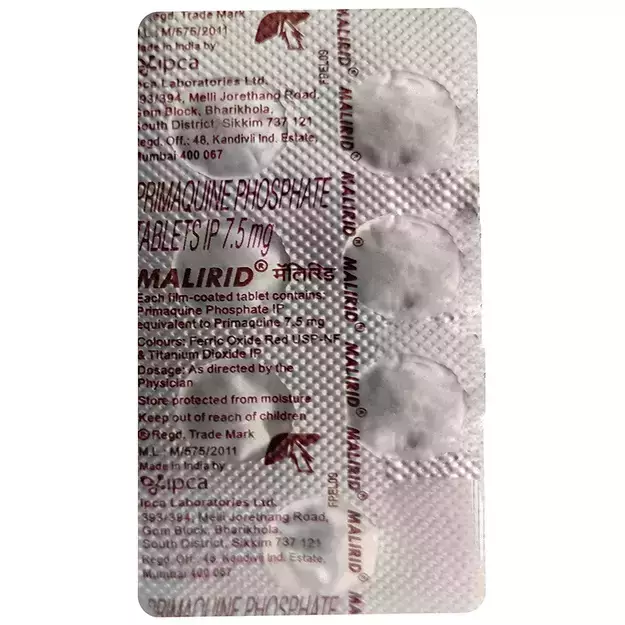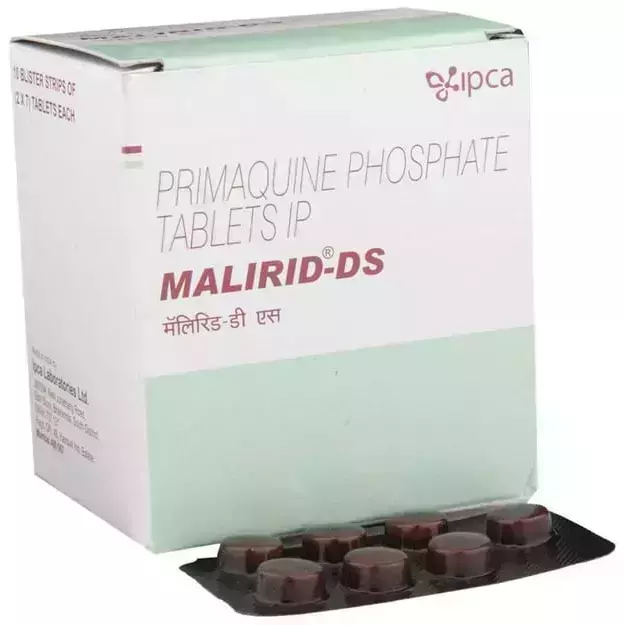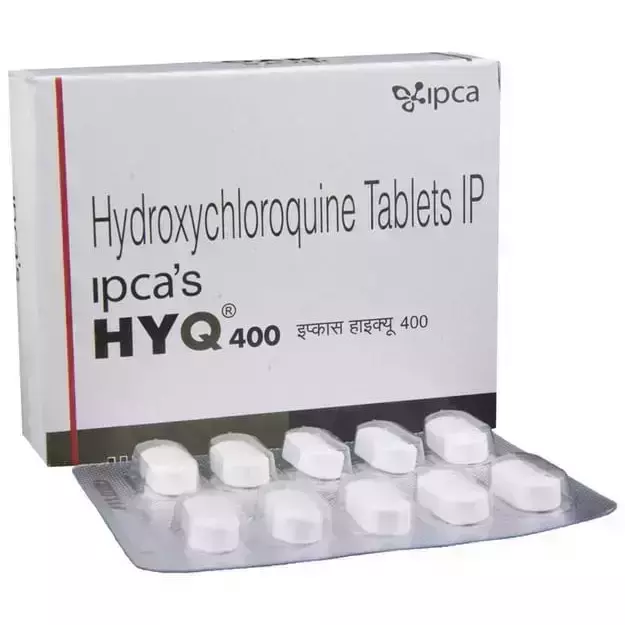Primacip 7.5 Mg Tablet is a prescription medicine that is available as a Tablet. Primarily, it is used for the treatment of Malaria. Primacip 7.5 Mg Tablet also has some secondary and off-label uses. These are listed below.
The right dosage of Primacip 7.5 Mg Tablet depends on the age, gender, and medical history of the patient. Besides the medical condition it is advised for, the route of administration also plays an important role in determining the correct drug dosage. Detailed information has been provided in the dosage section.
The most common side effects of Primacip 7.5 Mg Tablet are Abdominal Pain. Besides the aforementioned side effects, there are other adverse effects of Primacip 7.5 Mg Tablet as well, which are listed below. Usually, these side effects of Primacip 7.5 Mg Tablet go away soon, and do not persist beyond the duration of the treatment. If, however, they worsen or do not go away, please speak with your physician.
In addition, Primacip 7.5 Mg Tablet's effect is Moderate during pregnancy and Moderate for lactating mothers. Warnings related to Primacip 7.5 Mg Tablet's effects on the liver, heart and kidney, if any, have been listed below.
The section on Primacip 7.5 Mg Tablet contraindications lists all such conditions.
Besides this, Primacip 7.5 Mg Tablet may also have severe interaction with some medicines. Refer to the list below for further details.
In addition to the above precautions for Primacip 7.5 Mg Tablet, it is important to know that it is not safe while driving, and is not habit-forming.
X







